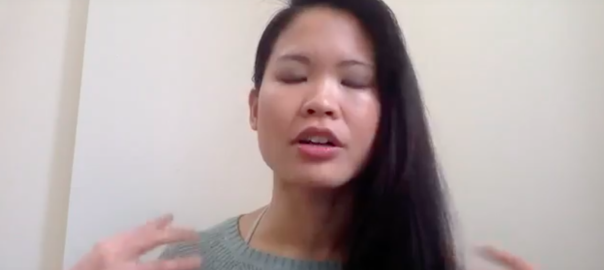Life is full of moments of disappointment, suffering and loss. We all know this. Nobody's life is perfect, although carefully curated Instagram posts or other public profiles of individuals seem to suggest otherwise. Since we can expect to have to weather life's ups and downs, it would make sense to understand how our handling of painful events can help us adapt and cope, and ultimately, to thrive.
In this post, I'd like to highlight the dangers of unhelpful coping strategies, share some excellent resources, and offer you a 5-minute yoga nap!
Think about the last time you faced a painful event. How did you respond? What did it feel like in your body? Do you remember?
Our natural stress response to emotionally painful events translates to pain that is palpable in the material body. For example, when we say we have a heartache, it is due to tightness across the chest, constricted breathing and increased heart rate. Some people withdraw from these distressing sensations, or numb the pain with activities, alcohol, drugs, sex, etc. Others suppress their emotions and demonstrate a stoic front, although inside they may be crying for help. And some others are overwhelmed, sucked into the whirlpool of negative emotions, ranging from self-loathe, anger to depression. These strategies are unhelpful as they run us aground.
Psychiatrist Bessel van der Kolk in his book The Body Keeps the Score, highlights how excess stress and the physiological changes in the body and brain can be debilitating in the long run, predisposing us to autoimmune diseases and more. He worked with trauma survivors of all stripes, but the implications are the same for those who have suffered other emotional pain. The body does not forget.
Can we find a more skillful response to painful events that are part of life?
If you are hurting, one possibility is to switch from evaluating the event (which has caused the hurt) to acknowledging what is happening at the raw sensory input level. So, we move from cognitive processing of "What went wrong?", "Can I handle it?" and "Why me?", to noticing the sensations in the body, of "I'm feeling heavy in my heart," and "My breath is shallow and rapid." We stay with the direct felt sense of the ripples of an event on our emotions and body. This is mindfulness in practice.
As we stay present to what is happening in our own bodies, we are a witness to our processing of pain, and begin to de-couple the binding of sensations to our go-to conclusions of aversion, overwhelm and other judgments.
To begin to transform pain, learn to befriend yourself. Be kind. Stay present for as long as you need you. Cultivate a daily practice of just closing the eyes for 5-10 minutes to check in on your bodily sensations. Tell yourself you are not alone to experience such pain. Humans for millennia in the past, and today all around the world, experience suffering of different magnitudes. It is part of the human condition.
Hold this space for yourself. Trust the process. You'd begin to integrate the painful event and see it for what it is - just one of life's moments. And before long, you might notice less and less of the pain you used to notice, and develop a deeper awareness situated in the body. This feels safe, nourishing, and healing.
You've transformed pain into deep inner connection and presence.
If you find it hard to sense your body, you are not alone! Get literate with the felt sense, and practise with a Focusing community near you.
Restorative yoga is an excellent way to cultivate interoception (perception of inner environment and bodily self) at the same time as the poses and calm breathing can help calm the nervous system. Louise Carr shares a list of great reasons for practising restorative yoga.
Here's the 5-minute yoga nap I promised. The pose is restorative, and we are borrowing it to cultivate presence, relaxation and bodily awareness. Breathe with me!
Instead of a power nap, practise this restorative yoga pose for 5 minutes (and more, as you get more comfortable).
In gratitude,
Ling
If you haven't experienced my body sensing online course yet, here's an invitation to sign up. It's another way to cultivate deep body presence, and is very suitable for those who are new to more subtle mindfulness techniques. From me to you, with compliments!
Looking forward to hearing your thoughts on this. Reach out through any of these channels, leave a comment. I look forward to discussing with you!
